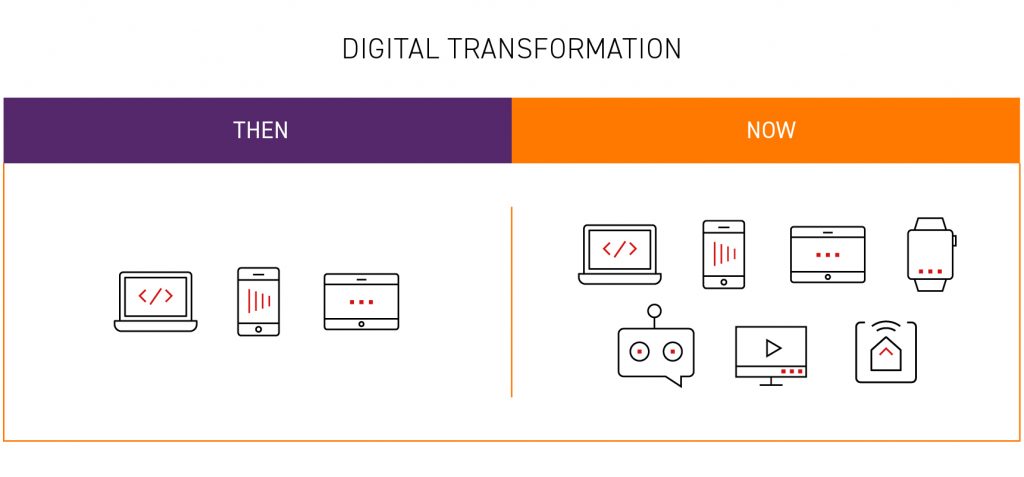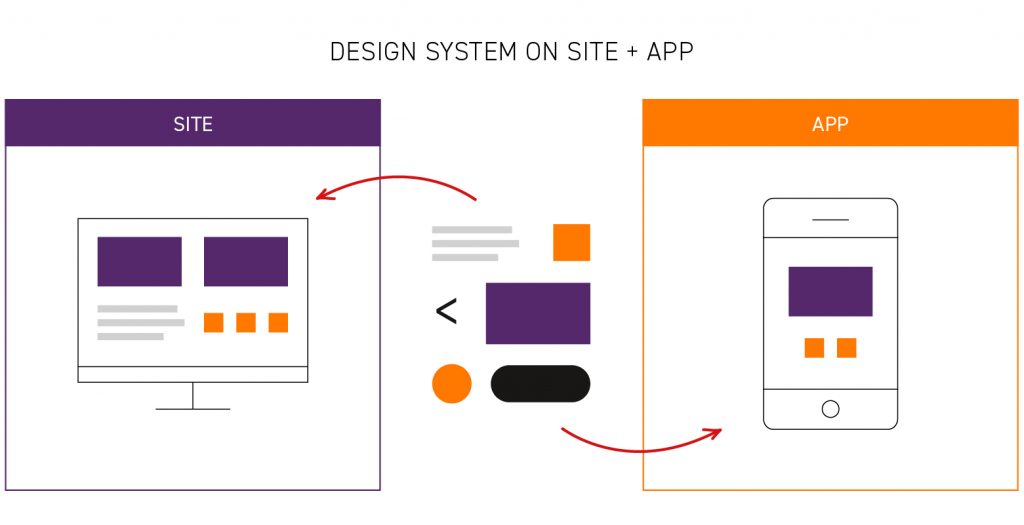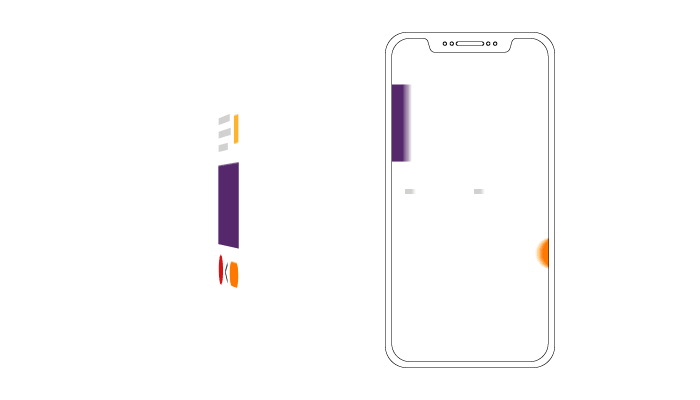E-Commerce / Improving Customer Experience
A great retail business is as much about the experience as it is the products. And in this area, the digital side has often been lagging. With the growth of e-commerce* the need for a better digital customer experience only grows – so let’s hit that nail right on the head.
If you are the owner of an e-commerce store, you must remember that your customers expect the same from experience you that they could get anywhere else – whether that’s digital or not – so the old slogan “the customer is king” is once again gaining importance. So what should you do to make your customer feel good and come back to you often?
*you might have already read about that, so we won’t bombard you with obvious statistics here.
Let’s Recap the Basics
Customer Experience is a broad concept that doesn’t need a big introduction – we’ve all been a customer at some point in our lives – but it’s worth stating that 86% of customers would pay more just for better service.
Put simply, Customer Experience (CX) is the customer’s experience with your company at every stage, including before, during and after the purchase. We can see this in both physical and digital stores:
- Visibility: More than just marketing, being visible is key. Physical stores invest in high-street locations, while digital stores invest in high quality websites that draw visitors in through search engines.
- First impressions: Whether it’s walking into a store or landing on a homepage, that first feeling counts.
- Navigation: Can users find their way around quickly? Shops have aisles, websites have categories and menus.
- Products: Of course, the end goal is to sell something. Product availability and other details are easy in-store, but online, we need to replicate this with availability, images and other essential product information.
- Promotions: Special offers and discounts help sell stock that isn’t moving, encourage cross-selling or otherwise drive more revenue. Online or offline, this is an essential part of the shopping experience.
- Customer service: Sometimes people need help, it’s inevitable. While online shoppers are highly independent, they may still require interactions when necessary.
These are just the broad strokes – but we all know that other elements, like the appearance of your website, can make a customer happy (or sad) and influence why they chose your business (or not). Each and every part of the customer experience journey decides whether they stay with you for the long term, or just bounce.
…But When?
Remember, Customer Experience is something that exists even when you don’t think about it.
Currently, 45.9% of respondents believe creating and implementing an effective Customer Experience strategy in their organizations will be the most important factor in building a competitive advantage in the next 5 years. But half a decade might as well be a lifetime in e-commerce: here the early birds will gain a significant advantage. Without good customer experience enablement, the best offices and prices won’t sustain a business.
CX in E-commerce: Walking the Digital Customer Journey
“Think like your customer” is always good advice. So let’s compare the two paths users are most familiar with.
First, a traditional brick and mortar store. You want to buy fruit. So you walk to a store, take the fruit in your hand, smell it*, and see exactly how it looks. If all goes well, you’re motivated to put it in your basket and head to the checkouts where you can quickly pay and leave. During this process, all the information needed, from the positioning of the products to clear pricing, was made available. Both subjective and objective feelings were considered.
Now let’s move to the website. Can you experience the same thing with your fruit selection? The answer is simple: no (at least for now). We can find the website, we can find the product, we can see images and read details – we can even see how many products are available and how much it costs – but much of the subjective feeling is lost.
So this is one of the challenges you as an e-commerce owner need to solve. And let’s not also forget that mobile-first e-commerce (that is, people browsing on their phone who will either buy directly there and then or even navigate to a physical store) and other devices in the wider multiexperience era are increasingly vital.
*we’re not judging, honest!
Putting It Into Practice
First, you need to walk a mile in your customers’ shoes.
In order to carry out effective Customer Experience activities, it’s imperative that you experience your customer’s point of view. It’s the essential benchmark for future activity: without this, your actions will be ineffective, to say the least.
First of all, you have to determine what their needs are, what annoys them, and even what truly aggravates them. Ask yourself if shopping at your e-commerce site is a pleasure or a terrible chore? Is it quick or slow? Easy or inconvenient?
… and if you’ve never tried to use your own service, shame on you! One of the beauties of e-commerce is that you can be your own secret shopper. But you can also gather info directly from the source, too:
- Don’t be afraid to ask customers for feedback on your products or store. Find out if they are satisfied with the purchase process.
- Use numerous tools at your fingertips, such as Net Promoter Score (NPS) or internet monitoring.
- Add special fields to collect reviews and comments and encourage your customers to leave their feedback.
Please note, however, that this will mostly collect feedback from those that made purchases, not the ones that visited and failed to do so. This will give your data some sort of survivor bias, but that’s a topic worthy of its own discussion.
Furthermore – it’s a really good idea to automate the entire feedback process. The ability to scale here is a unique advantage to e-commerce, as you can’t have real people asking questions next to every physical checkout. That’s just annoying.
However, just asking and collecting information is pointless if you don’t use it. Analysis is critical and the more you collect – and utilize – the better the solutions you can implement.
Ensure Multi-Channel Consistency
As we mentioned earlier, your customers are increasingly coming to you from different channels. Your e-commerce experience is likely stronger in some areas (desktop and browser-based shopping) than others (mobile, tablets etc) so discover the best improvements for each and implement the relevant solutions.

The quality you present should always be guaranteed at the same level, even as the customer moves from channel to channel – in fact, moving from one device to another should be near seamless. If we want to both fully understand and help the customer, we need to do so on all of their channels.
Also ensure that the look and feel is consistent across all channels. The visual is just as important as the technical. Multiexperience means optimizing the channel level experience, but the branding and navigational cues should be consistent (that’s what Design Systems are for 😉).

Ensuring Help is Available
Today’s shoppers don’t want to be disturbed, but they do want help to be available on their terms. Customer Service should be passive in this regard. However, it is important that the customer has the opportunity to contact you in the way they choose. This can include , for example, a hotline*, e-mail address, but also more immediate forms such as online chat or even messenger support. If you already have a base of the most common problems of your customers, try to automate part of this process based on, for example, chatbots.
Remember also that nowadays more and more often users expect a quick response or fixing a problem. A well-designed process for solving customer problems will help you do that. Alongside training your support teams, Artificial Intelligence and other automation enables can help.
(*We’d also recommend analyzing your customer demographics and support each in their preffered ways. )
We know today’s digital-savvy people don’t like to call your business, but the rising group of senior shoppers may very well prefer this approach. Even better, some champions out there, like our friends at RTV EURO AGD, even support sign language over video chat. Now that’s inclusivity!
…But Making Freedom a Priority
Not all your customers want to contact you directly. In fact the vast majority want to handle everything themselves – from start to finish- so make this a reality! If you wonder whether such sections on your website like FAQs make any sense – our answer is – they do. And your analytics will probably confirm it!
Remember that it is not only about knowledge, but also about other key issues, such as issuing VAT invoices in B2B selling, changing the delivery address, making a complaint, etc. . As a last resort, when they can’t handle a problem, they will probably turn to you for help. (You know what they say, give someone a fish…).

Get Personal!
If there’s one area online shopping can outmatch retail stores, it’s personalization. If your business thrives on return shoppers (ala 99% of all businesses) then a personal experience can do wonders:
- You can help users find their most frequent purchases more easily
- You can use the recommendation engines to better upsell to them
- You can automate processes that they use to make their job easier
- You can even use automated marketing to better highlight new products or services
Whether it’s a text message, an email, a direct contact, a personalized promotion, or even a recommendation based on purchase history – it’s all up to you. Personalization is the opposite of blanket-covering marketing strategies; implemented well and you’ll see the results.
What’s more, there’s a good chance many of your current tools, from e-commerce platforms like Shopify to high-end digital experience (clues in the name 😉) platforms like Kentico Xperience, often come with marketing automation tools if you know where to look.
Test the Visuals
Sometimes, simply changing the color of the call–to-action button is enough to increase sales in your e-commerce. More than just internal testing, you can use A/B testing to see if this works. Here, you need a few key tools:
- A script to send a subset of users to the ‘test’ variant
- A means to implement a different but consistent experince. I.e, using an automated design system to ensure the test site is completely consistent
- An analytical tool to measure the results on the benchmarked and test variations.
The key to testing however, is to test one thing per test, to ensure you know exactly where the change was coming from.

Give Choices
If you’ve recently purchased access to an online course, for example, it’s likely that you’ve been given a choice of different delivery options (at different prices, of course). This increasingly common solution makes a lot of sense.
By doing so, you subconsciously create a belief in the customer that they have the ability to choose a personalized service (or product) for themselves. And this sense of personalization has existed before the internet – it’s a well known restaurant trick that the most expensive bottle of wine isn’t a hot-seller. It just makes the other options look reasonable and enables the customers choice.
But be careful! Too many options can turn against you, so try to keep them under 4 or 5 items. This should include for example: a couple of delivery options, a courier option and even a remote pickup option.
Don’t Waste Time
Nobody likes waiting. In-store, users don’t need to wait for products to load. Online however, there are many technical aspects that can interrupt the customer experience:
- If your server isn’t optimized, it’s going to load slowly – and people may leave.
- If your mobile site isn’t light enough for roaming or wi-fi… yup, people will leave.
- If your product information isn’t clearly displayed above the fold, people may leave.
- If you don’t have your pictures optimized to load effectively then… well, you know where we’re going here.
- Also consider your third party integrations, especially in the payment and fulfillment areas. The best experiences can come crashing down if users can’t actually pay or, worse, the delivery doesn’t match what was promised (or payed for).
Just remember: the end-user never sees the backend, but they sure as heck feel it.
Time to Start
So let’s sum it up. If you care about customer loyalty and increasing profits of your company, taking care of an effective Customer Experience strategy will be the best way to achieve this goal. Fortunately, there are many possibilities.
First of all, start by analyzing the current situation and implement the changes regularly. This process also must include regular testing to both confirm if it worked and establish a new benchmark. You should be on a constant quest to transform your customer experience.
The bar can always be raised higher. Small but constant change is much more viable. Don‘t wait 5 years for a process that could be started tomorrow. You’ll thank us come, I dunno… Black Friday? 😉







